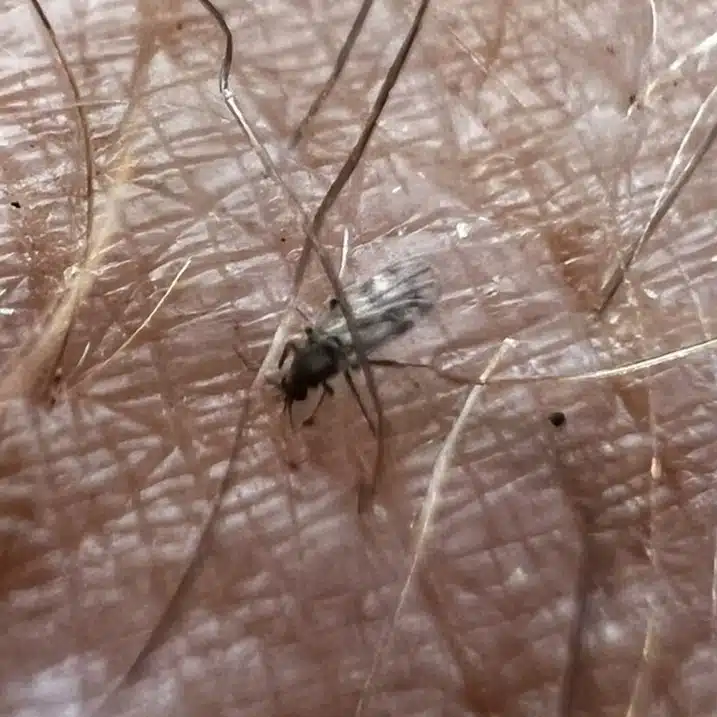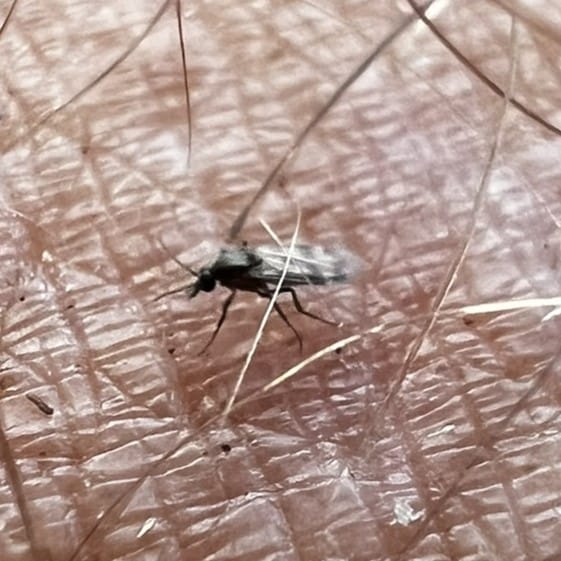Late winter and spring along the coastal areas of the northern Gulf can be pleasant – until the no-see-ums start to bite. Aptly named, these tiny little demons can become so numerous, they can make a sane person scream, holler, and use bad words. Of course, only the females bite – just saying.
And although “no-see-ums” is the most common of common names, they are also known by other monikers, like “punkies”, “sand gnats”, and my personal favorite, “flying teeth”. That last name is a reference to their saw-tooth mandibles that they use to literally cut into the outer layer of your skin to draw blood.
You know they are getting serious with those blades when they do a head stand on your arm, digging in for the prize – your blood, that they lap up and fill their abdomens. That is about when you notice the pain. Like other blood-sucking biting flies, a blood meal from a warm-blooded animal provides protein needed for egg production.

This is why we are blessed with clouds of these flies twice a year, with peaks during the mild weather of late winter and early spring (February – April) and late fall (October – November). I have been in marshes during these times when you could not keep your mouth open without choking on them, nor keep them out of your eyes. Levels drop in the heat of summer months.
But alas, they are important elements of the habitats where they live. Both sexes of adults feed on nectar, with females needing blood to produce eggs. Larvae are predators in their aquatic habitats, feeding on a variety of small organisms. A research colleague and I once recorded bits of small oligochaetes (worms) and nematodes in the guts of larval Culicoides mississippiensis. In that way, they move carbon out of the muds of marshes into terrestrial habitats when adults emerge.
Adults live a few weeks, as do larvae, but can be longer depending on the seasons. And although they can ruin a perfect spring day, there are ways to deal with them. Most repellents used for mosquitoes do not work, but oils like Avon’s Skin-so-Soft is quite effective, for me at least. My wife Mary refuses to use it because of its odor. My response is that I really do not care what I smell like when no-see-ums are around. Besides, the stuff is supposed to be good for your skin.
Homemade concoctions using essential oils are also useful for keeping them at bay. And no, I am unaware of any type of pesticides that can lower their numbers, despite the promises by some. There is a so-called “no-see-um” screen available for windows and enclosed porches that seem to keep most out, except for those pesky holes in that type of armor.
But, if you can work through the few weeks of no-see-um seasons, all is good – until … Yellow Fly and Mosquito seasons. The price of living a coastal life.
Hope to see you in our great outdoors!




